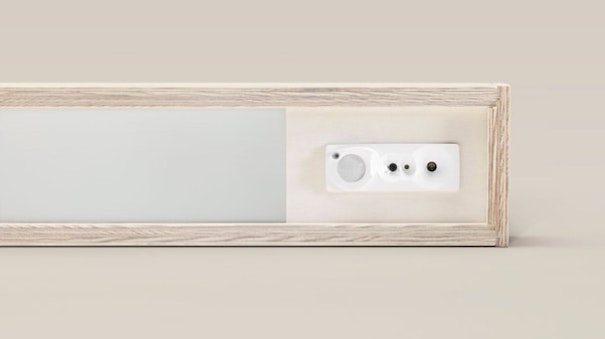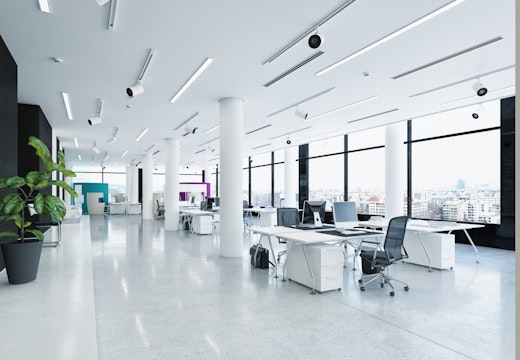Enhancing in-office attendance with intelligent lighting systems
The return to the office has been slow to gather pace. Can a lighting control system that interacts with workplace navigation help to maximise employee time spent in the office?
Cast your mind back to 2019, the pre-pandemic era. At that time, while a few organisations had implemented remote working policies, most businesses relied heavily on the office-based workforce. If you were a facility manager back then, your job was relatively straightforward because you knew what employees expected from their work environment.
Fast forward to today, and the landscape has significantly changed. People have grown accustomed to working from home, appreciating the convenience it offers. Consequently, the modern office must now provide more than just a physical workspace, it needs to ensure that time spent together as a team is optimised.
A contemporary office must cater to a diverse array of needs, which is where the complexity arises.
Individuals seek to utilise office space on various days and for a multitude of tasks. Different departments have distinct requirements, some emphasising creativity and collaboration, while others prioritise concentration.
People adopt a range of work models, from hybrid to fully remote, and some still prefer a full-time office presence. These individual preferences create a substantial challenge in designing a workspace capable of accommodating the unique needs of each employee while also aligning with the broader workforce’s objectives.

Image courtesy of Fagerhult
Optimising performance intelligently
The office experience has shifted towards a more consumer-oriented approach, with employees seeking environments that enhance their work experience rather than simply providing desk space.
Let’s consider a few potential scenarios…
Imagine you need to collaborate with various team members on a project. To streamline this process, you require visibility into your colleagues’ office schedules, the ability to reserve a meeting room, and assistance in finding your way to that room. Using smart office solutions like Sony’s Nimway, these tasks become effortless through a dedicated app.
Now, suppose you prefer not to pre-book desk space and instead want the flexibility to choose the most suitable area for your daily tasks. No problem. Equipped with the right tools, you can easily identify all available spaces within your office. Additionally, you can quickly check which of your colleagues are present in the office that day, allowing for an impromptu coffee chat or lunch catch-ups.
This dynamic and spontaneous working style not only boosts productivity, communication and innovation among colleagues but also provides employees with the freedom to focus on more critical tasks.
Where does lighting come into it?
Recognising the significant impact of lighting on employee productivity and wellbeing, designers understand its pivotal role in optimising the use of different spaces.
Artificial lighting is essential for facilitating work within a workspace. In traditional design practices, lighting specifications often cater to worst-case scenarios, whether the office is fully occupied by 1,000 people or accommodating a smaller workforce of, for instance, 100 individuals. While ensuring adequate visibility and productivity is crucial with appropriate light levels, it’s unsustainable to maintain a constant, unvarying level of lighting regardless of occupancy from an energy conservation standpoint.
Fortunately, there is a departure from this one-size-fits-all lighting approach.
One viable solution involves the creation of zones, where sensors activate lighting only when a space is in use. The efficacy of these solutions depends on factors such as the size and configuration of control zones and the number of occupants present within them at any given time.
For instance, in a scenario where office occupancy is at 50 per cent, lighting energy consumption might still be at 100 per cent for a significant portion of the day. While this solution may not be flawless, these commonly employed control systems can yield reasonably effective results, if only by ensuring that lights are turned off at the end of the workday.
Lighting influences our emotional state
Beyond the imperative of reducing unnecessary energy consumption and ensuring appropriate lighting levels for specific tasks, we must also consider the profound impact of lighting on human emotions. Lighting serves not only to enhance visibility but also fundamentally shapes our perception of a given space, subsequently influencing our behaviour and emotions.
Dimmer lighting levels tend to encourage conversation and foster a slower, more sociable pace of activities. Conversely, well-lit, brighter environments tend to promote a heightened level of activity.
Research has shown that in office settings, individuals generally prefer well-lit, open spaces filled with natural light. However, when these same spaces are devoid of people, they not only consume energy needlessly but can also evoke feelings of isolation.
Consider another scenario: you’ve been engrossed in focused work, and time has slipped away unnoticed. As co-workers depart for the day, sections of the office gradually empty. You glance up and suddenly realise you’re the sole remaining occupant, with the lights around you having automatically switched off. Your eyes are accustomed to the brightness of your immediate surrounds, making it challenging to discern the darker areas. You might start wondering, ‘Is someone watching me? Is there someone lurking in the shadows?’ When lighting control is taken to extremes, it can evoke feelings of discomfort and unease.

Image courtesy of Fagerhult
Regrettably, these scenarios remain all too prevalent, undermining workplace productivity, creativity, and overall attractiveness. However, there is no need for this to persist.
Illuminate wherever there are people
Fagerhult, in collaboration with Sony, has introduced an innovative partnership that combines lighting control and navigation. This endeavour involves the integration of Sony’s intelligent solution, Nimway, with Fagerhult’s Organic Response system. This integration utilises the existing lighting infrastructure, incorporating Organic Response sensor nodes into the light fixtures. Each sensor node is equipped with a radio chip that establishes a wireless mesh network for communication between nodes. It can intelligently adjust light levels based on occupancy and natural light in the room.
‘A significant feature is the ability to gradually dim the lighting as individuals move away from occupied areas’
A significant feature of this responsive system is its ability to gradually dim the lighting as individuals move away from occupied areas, rather than abruptly turning it off. This adaptable system efficiently scales regardless of the number of occupants, striking a balance between energy conservation and creating a more comfortable and enjoyable workspace.
In terms of lighting calculations and design, this technology requires minimal changes. To illustrate, consider the earlier example of a 1,000-capacity office. Whether lighting for 100 or 10 people, this technology empowers us to tailor experiences to suit the variable needs of post-pandemic workplaces. It allows for the creation of individual user profiles or task-specific profiles, which can be selected either automatically or manually by users.
Furthermore, the data collected can be cleverly leveraged to allocate workspace for individuals who prefer to collaborate and to separate those who do not. In all cases, it can encourage people to opt for spaces with more natural daylight, reducing energy consumption and providing additional exposure to circadian-entraining light—a known contributor to improved health and well-being.
Our modern workplaces are dynamic, constantly adapting to accommodate occupants’ diverse tasks and work patterns. This flexibility empowers individuals to select the type of workspace that suits their needs, similar to the choices we had when working from home during the pandemic.
When applied and managed thoughtfully, lighting has a positive impact on the work environment, enhancing our overall experience while we’re there.








